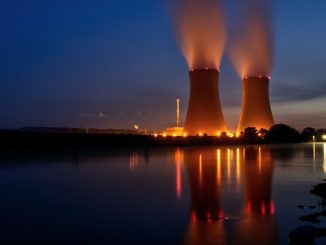Don Boudreaux and Mark Perry are among those who regard John Tierney’s claims of energy cornucopia to be persuasive.
Here are Tierney’s strongest arguments:
Giant new oil fields have been discovered off the coasts of Africa and Brazil. The new oil sands projects in Canada now supply more oil to the United States than Saudi Arabia does. Oil production in the United States increased last year, and the Department of Energy projects further increases over the next two decades.
Let me discuss each of these observations in turn.
Africa and Brazil. It is true that these areas are increasing production. Comparing the 12 months ended August 2010 with the 12 months ended August 2006, oil production from Africa was up a half-million barrels a day, and Brazil was up almost 600,000 barrels a day. On the other hand, over the same period, production from Norway fell by 642,000 b/d and Mexico was down 782,000 b/d, as those countries moved farther along the declining production rates that eventually characterize every mature field. Worldwide from all fields, production was up 1.2 mb/d over these 4 years. However, consumption from China alone increased 1.5 mb/d between 2005 and 2009, meaning that despite the increased production from Brazil, Africa, and anywhere else in the world, everyone outside of China had to make do with less.
Canadian oil sands. Of course the U.S. preferentially imports oil from those countries that are closest to us geographically. For example, U.S. oil imports from Mexico and Venezuela exceed those from all countries in the Persian Gulf (including Saudi Arabia) combined. The appropriate measure is not exports to the U.S. but rather exports to the world as a whole. On a global basis Canada exported 1.5 million barrels of oil per day in 2009, less than 1/4 the 6.4 mb/d from Saudi Arabia. The Canadian Association of Petroleum Producers expects that with aggressive growth their oil sands production could increase an additional 1.6 mb/d by 2025. And a proposed pipeline to deliver that oil to U.S. markets may not get approved.
U.S. oil production. Here’s a graph of U.S. oil production since 1920, in which the recent increase that Tierney mentions is clearly evident, as a modest blip back up in what has been a profound decline going back to 1971.

Production of crude oil from U.S. fields, average over preceding 12 months, in millions of barrels per day, December 1920 to September 2010. Data source: EIA
The following graph takes a closer look at the last decade for those statistics, breaking it down by offshore versus onshore production. There were sharp drops in production from Hurricane Katrina in 2005 (which caused quite long-lasting damage) and Hurricane Ike in 2008. Those two events left average offshore production over 2005-2008 substantially lower than it had been earlier in the decade, and this accounts for the acceleration of the downward trend in overall U.S. production that we saw over these years. The gains in 2009 and 2010 mostly come from a return of offshore production to its earlier levels. Once again, the political and regularity reaction to the BP oil spill will be important in determining what happens from here. As for the EIA’s projection of further increases in U.S. production after 2010, the magnitude of these is modest, supposedly getting us back to 1998 levels by 2035, which would still be 33% below the peak U.S. production levels seen in 1972, very little of which came from the challenging offshore and arctic environments we are increasingly going to be counting on. And need I mention that those EIA projections are controversial?

Onshore, offshore, and total U.S. production, averages over preceding 12 months, in millions of barrels per day, January 2000 to August 2010. Top curve: total production. Dashed curve: onshore. Solid curve: offshore. Data source: EIA
Tierney goes on to claim that “the really good news is the discovery of vast quantities of natural gas,” and here I agree. The discovery of abundant new sources of natural gas is a huge story. Figuring out how to use this resource to replace our reliance on oil ought to be one of our highest priorities.
But the inference that we have nothing to worry about in terms of global oil supplies is not the conclusion that I would draw from the facts that Tierney discusses.
Energy cornucopia?




Leave a Reply